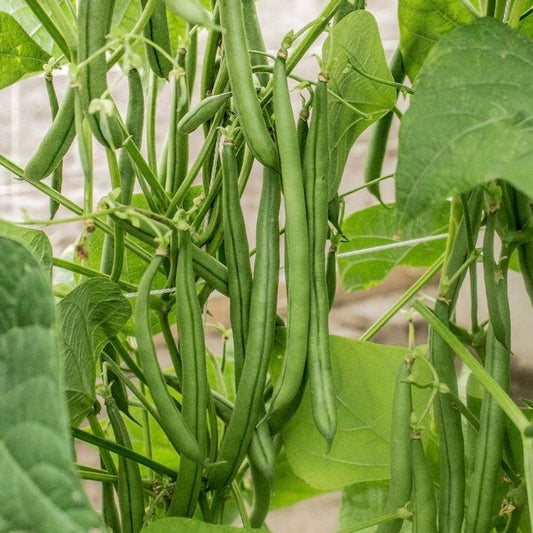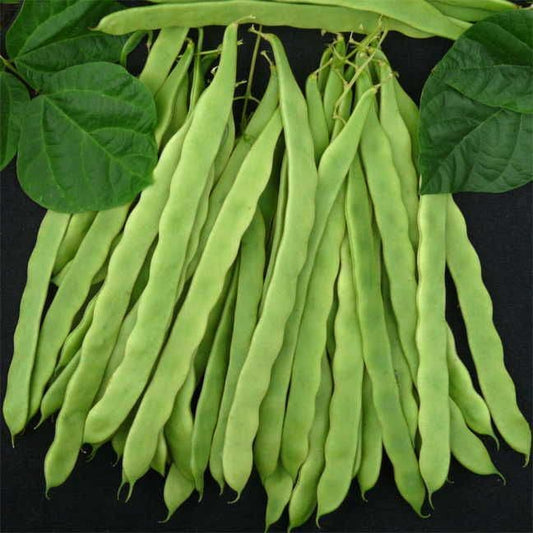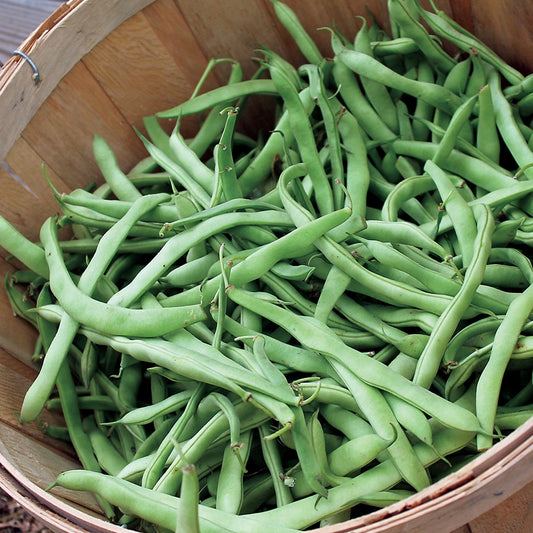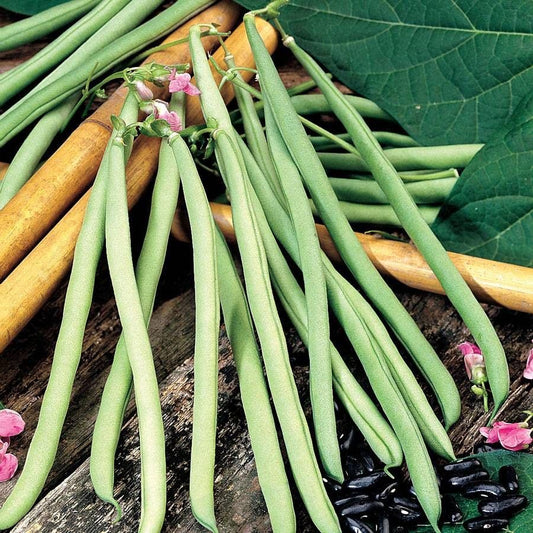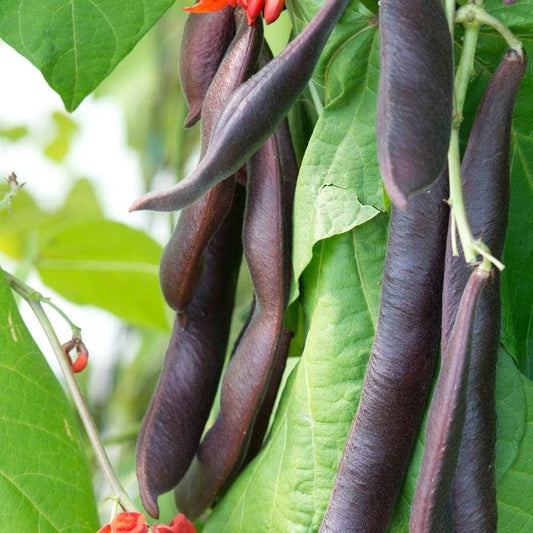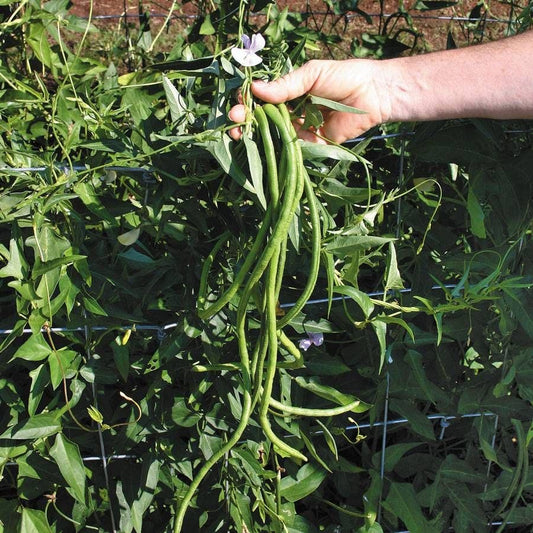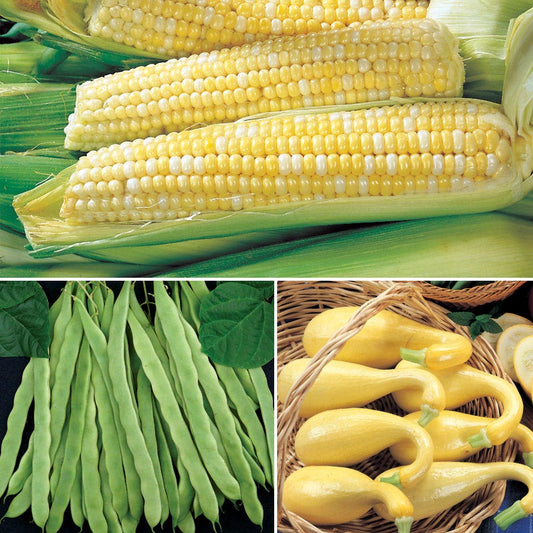Pole Bean Seeds
Pole beans climb upward, giving you more beans in less space and longer harvest windows. From heirloom favorites like Kentucky Blue to unique varieties like Orient Wonder Yard Long Beans, our collection gives you the best of flavor, productivity, and beauty.
-
Seychelles Garden Bean Seeds
Regular price From $6.95Regular priceUnit price / per$6.95Sale price From $6.95 -
Algarve Garden Bean Seeds
Regular price From $9.95Regular priceUnit price / per$9.95Sale price From $9.95 -
Kentucky Blue Garden Bean Seeds
Regular price From $4.95Regular priceUnit price / per$4.95Sale price From $4.95 -
Cobra Garden Bean Seeds
Regular price $9.95Regular priceUnit price / per$9.95Sale price $9.95 -
'Black Knight' Heirloom Runner Bean Seeds
Regular price $11.95Regular priceUnit price / per$11.95Sale price $11.95 -
Orient Wonder Yard Long Bean Seeds
Regular price $9.95Regular priceUnit price / per$9.95Sale price $9.95 -
3 Sisters Seed Collection
Regular price $19.95Regular priceUnit price / per$19.95Sale price $19.95 -
Blue Lake FM-1 Bean Seeds
Regular price From $4.50Regular priceUnit price / per$4.50Sale price From $4.50
Pole Bean Seeds
What Is the Secret to Growing Pole Beans?
Pole beans love warmth and support. The secret is giving them something sturdy to climb—like a trellis, teepee, or fence—and planting after the danger of frost has passed.
Make sure the soil is rich, loose, and well-draining for best results. A thick layer of mulch helps retain moisture and block weeds.
Check out our vegetable gardening tools for help getting started.
What Month Do You Plant Pole Beans?
In most USDA zones, you can plant pole bean seeds from late spring to early summer. Here are more specific details based on your region:
-
Zones 3–5: Late May to early June
-
Zones 6–7: Mid to late May
-
Zones 8–10: Late April to early May
Always wait until soil temperatures are consistently above 60°F. Pole beans are warm-season crops and don’t like cold feet.
If you’re unsure which planting period applies to you, use our USDA Hardiness Zone map for reference.
What Should You Not Plant Near Pole Beans?
Several plants and vegetables can clash with pole beans. Avoid planting your seeds near:
-
Onions and garlic: These may stunt growth
-
Beets: They can compete for root space
-
Sunflowers: Can crowd out the climbing space
Instead, consider companion plants like corn, radishes, or marigolds:
-
Corn acts as a natural trellis for pole beans, allowing the vines to climb and maximizing vertical space.
-
Radishes grow quickly and help loosen compacted soil, which supports healthy bean root development.
-
Marigolds repel common pests like aphids and nematodes, providing natural protection for your beans.
These companion plants work together to enhance growth, improve soil conditions, and reduce pest problems.
Do Pole Beans Like Full Sun or Shade?
Pole beans love full sun, at least 6 to 8 hours of direct sunlight per day. While they may grow in partial shade, yields will be lower and pods may be smaller. Choose a sunny spot and keep the soil consistently moist but not soggy.
If you're planning a shade-loving vegetable garden, try lettuce, brussel sprouts, or carrots.
5 Steps to Plant Your Pole Bean Seeds
To get the most out of your pole bean harvest, a strong start is key. Follow these simple steps to foster healthy growth from the very beginning:
-
Choose a sunny location with good drainage.
-
Install your support structure (trellis or poles) before planting.
-
Plant seeds 1 inch deep, about 3 inches apart.
-
Water well after planting, and keep the soil evenly moist.
-
Mulch and monitor growth, training vines as needed.
With the right setup, your pole beans will reward you with a season full of rich harvests and green vines.
Want more growing tips? Visit our Vegetable Growing Guide.
